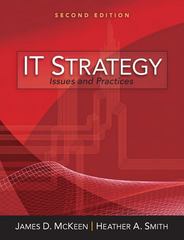Answered step by step
Verified Expert Solution
Question
1 Approved Answer
2 . using Porters Five Forces framework, analyze the attractiveness of the global pharmaceutical industry. Support your analysis with evidence from the global pharmaceutical industry
using Porters Five Forces framework, analyze the attractiveness of the global pharmaceutical industry. Support your analysis with evidence from the global pharmaceutical industry case study. This is the case study: Case Study The global pharmaceutical industry: world saviour or loathed pariah? Sarah Holland
A new CEO's challenge
In August during the second year of the global COVID pandemic, Johnson & Johnson J&J revealed that Alex Gorsky would be stepping down to be replaced by Joaquin Duato, a longterm J&J insider, as CEO of the biggest healthcare company in the world. J&J was the leading global pharmaceutical company with $bn in global revenues, but about to be knocked from the top spot by Pfizer's dazzling pandemic success, while J&Js oneshot COVID vaccine was beset by manufacturing issues and safety concerns. J&J scored poorly on crucial measures of innovation, rated only th in the industry on new product approvals and the value of its drug pipeline.
Furthermore, despite its virtuous company 'Credo' and top pharma ranking in Fortune magazine's World's Most Admired Companies list, J&J was still navigating highprofile talc. lawsuits and embroiled in the deadly opioid crisis. How was Duato going to maintain the company's ethical reputation, drive successful innovation and recover industry leadership?
Industry evolution
As described in Box the pharmaceutical industry is characterised by a highly risky and lengthy research and development R&D process, intense competition for intellectual property, stringent government regulation and powerful purchaser pressures. How has this unusual picture come about?
The origins of the modern pharmaceutical industry date from the late nineteenth century, when dyestuffs were found to have antiseptic properties. Penicillin was a major discovery, and R&D became firmly established within the sector.
The market developed some unusual characteristics. Decision making was in the hands of medical practitioners whereas patients the final consumers and payers governments or insurance companies had little knowledge or influence. Consequently, medical practitioners were insensitive to price but susceptible to the efforts of sales representatives.
Two important developments occurred in the s and s First, the thalidomide tragedy an antiemetic for morning sickness that caused birth defects led to much tighter regulatory controls on clinical trials. Second, legislation was enacted to set a fixed period on patent protection typically years. On patent expiry, rivals could launch generic medicines with exactly the same active ingredients as the original brand at a lower price. The dramatic impact of generic competitors is illustrated by Merck's topselling asthma and allergy drug Singulair, which lost per cent of US sales in just four weeks. Generics had a major impact on the industry, driving innovation and a race to market, since the time during which R&D costs could be recouped was drastically curtailed.
The pharmaceutical industry is unusual since, in many countries, it is subject to a 'monopsony' there is effectively only one powerful purchaser, the government. Governments focus on pharmaceuticals as a politically easy target in efforts to control rising healthcare expenditure, using price or reimbursement controls. Italy's government even set a spending cap and required companies to refund half the overspend, a whopping bn in The industry lacks the public or political support to resist. Not surprisingly, real drug spending per person stayed flat from to while overall health spending grew significantly Far from driving the problem, pharmaceuticals were probably the most rigorously tested and productive healthcare investment, but remained by far the preferred target.
Business environment
Ageing populations create pressure on healthcare systems, since 'overs consume four times as much healthcare per head as younger people. Combined with an epidemic of chronic diseases linked to obesity, this created an unsustainable situation.
Box The drug development process
The pharmaceutical industry has long new product lead times, with period from discovery to marketing authorisation typically taking almost years Figure New product development can be divided into distinct research and development phases. The research phase produces a new chemical entity NCE with the desired characteristics to be an effective drug. Development encompasses all of the formulation, toxicology and clinical trial work necessary to meet stringent regulatory requirements for marketing approval.
It takes years on average for an experimental drug to travel from the lab to patients.
During all of these phases 'attrition' occurs, as promising agents fail particular hurdles, so most R&D projects never result in a marketed drug. Latestage failures are particularly costly and not uncommon in Th
Step by Step Solution
There are 3 Steps involved in it
Step: 1

Get Instant Access to Expert-Tailored Solutions
See step-by-step solutions with expert insights and AI powered tools for academic success
Step: 2

Step: 3

Ace Your Homework with AI
Get the answers you need in no time with our AI-driven, step-by-step assistance
Get Started


